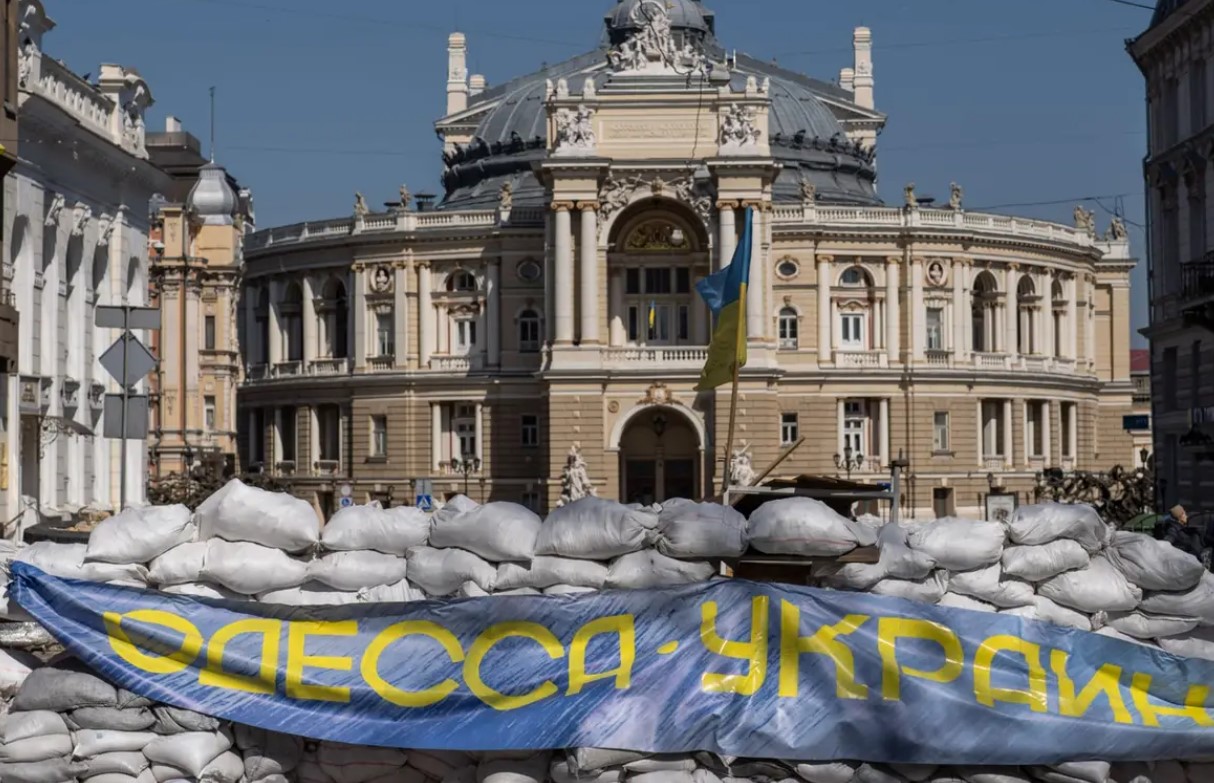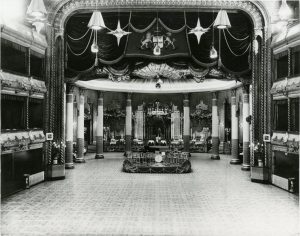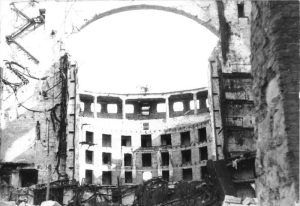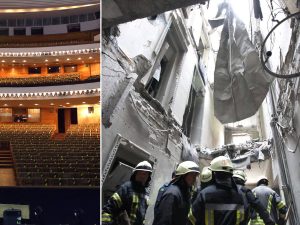
OPERA IN WARTIME a blog
OPERA IN WARTIME
Any war had a big impact on the cultural life and on opera in particular.
Opera houses had to be closed during wars and many were destroyed by war.
But often opera thrived even during wartime and rose again like a Phoenix afterwards.
We will look at World War II and the war in the Ukraine.
OPERA AND WORLD WAR TWO
England
At the beginning of the war Britain had two permanent opera houses, the Royal Opera House and Sadler’s Wells. At the outbreak of war, the Royal Opera House was taken over as a dance hall. Sadler’s Wells was able to continue its activities with seven productions in the first year after war had been declared (including Gounod’s Faust, Bizet’s Carmen, and Verdi’s La Traviata and Othello). However, when the blitz began the theatre was taken over as a bomb shelter and refuge for the homeless, and the opera company instead began touring the areas most affected by the blitz. For security reasons these performances, which were intended to boost national morale, received no advance publicity. The company moved temporarily to the Victoria Theatre, Burnley and the New Theatre, St. Martin’s Lane.
Sadler’s Wells reopened on 7 June 1945, with the premiere performance of Benjamin Britten’s opera, Peter Grimes, with Peter Pears in the title role. The Royal Opera House had become a Mecca Dance Hall during the war, and was set to remain this way until Boosey & Hawkes intervened. Consequently, there was no company that could take up residence, and the Royal Opera House was instead reopened with a performance of Tchaikovsky’s ballet, Sleeping Beauty, in February 1946, whilst a new resident contemporary opera company was built up from scratch.
Quoted from https://holocaustmusic.ort.org/music/wartime-opera-in-britain/

Royal Opera House Covent Garden as Dance Hall
Germany and Austria
Before the war the Nazis very much used opera as part of their propaganda. German opera such as Wagner was greatly promoted. Jewish composers and their Entartete Kunst were forbidden to be performed. The history of Bayreuth and Hitler is well known and documented.
When the war started opera houses kept playing until summer 1944 when all theaters were closed.
In Munich Richard Strauss Capriccio had its world premiere October 28, 1942.
On October 2, 1943 the Munich Nationaltheater was almost totally destroyed by air bombing.

Munich Nationaltheater bombed
The Nationaltheater was rebuilt after the war and reopened November 21 1963 with Die Frau ohne Schatten by Richard Strauss.
The Semper Opera in Dresden was bombed on 13/14 February 1945 the subsequent firestorm, leaving only the exterior shell standing.

The last performance before the bombing was “Der Freischütz” on August 31, 1944.
During four decades the opera was faithfully rebuilt in the DDR period and reopened on 13 February 1985, also with “Der Freischütz”.
The Vienna Staatsoper kept playing until 1945.
The last performance was Martha by Flotow on January 5, 1945.
On March 12, 1945 the Staatsoper was hit by bombs. The entire stage and the auditorium were destroyed.

The reconstructed Staatsoper reopened November 5, 1955 with Fidelio.
There is a long list of opera houses bombed in World War II: Berlin (the Staatsoper and the Kroll Oper), Hamburg, Köln, Leipzig, Frankfurt, Dortmund, Mannheim, Essen, Bonn, Kassel, Darmstadt, Karlsruhe…
ELSEWHERE
On Malta, the Royal Opera House Valletta, was struck by an air raid bombing on April 7, 1942
For decades, while debate raged as to what to do with the site, only a few columns and the grand terrace were left standing as a reminder of the majestic structure that had once lived. The opera house was never rebuilt. The site became the Pjazza Teatru Rjal, an open air theatre.
In Italy, the Teatro alla Scala was hit in 1943 destroying the roof but the original Neoclassical facade was spared.
Reconstruction began immediately, and already on May 11, 1946 the house was officially reopened with a memorable concert conducted by Arturo Toscanini and Renata Tebaldi participating.
OPERA AND THE WAR IN UKRAINE
Ukraine has important opera houses in Kiev, Lviv, Odessa, Kharkiv, Dnipropetrovsk and Donetsk.
When the war began in 2022 Kharkiv closed. Kiev, Donetsk and Odessa closed temporarily, but reopened after several months.
Lviv and Dnipropetrovsk continued to play.

Odessa opera during war
Lviv Opera even launched a world premiere: Yevhen Stankovych’s The Terrible Revenge based on a short story of Gogol.
Kharkiv Opera went on a tour to Lithuania, Austria and Slovakia.
While on tour the Kharkiv opera house got hit by a Russian rocket and was severely damaged.

Kharkiv opera before and after
At the beginning of the war Kyiv’s National Opera House closed for four month, but then reopened.
The first performance back was of Gioachino Rossini’s comic opera, The Barber of Seville, and the audience reportedly gave the production a 10-minute standing ovation.
Although the theatre can usually hold 1,300 attendees, only 300 seats in the stalls were up for sale. This was due to concerns about needing to quickly evacuate the audience should an air raid siren sound, as the bomb shelter can only hold 300 people.
Since then there have been regular performances of the Italian repertoire and the Ukrainian operas Natalka Poltavka by Lysenko, and Zaporozhets za Dunayem(A Cossack Beyond the Danube) by Gulak-Artemovsky. The Russian repertoire is not being performed for the time being,
